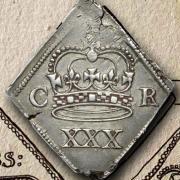|
|
The current range of books. Click the image above to see them on Amazon (printed and Kindle format). More info on coinpublications.com |
|
|

Charles I Mm Anchor Shilling - Sharp F5/1
By
mhcoins, in British Hammered
 Coinpublications.com
Coinpublications.com